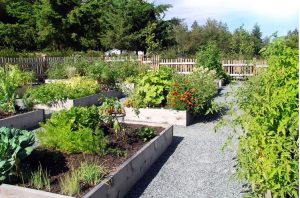Exploring the World of Edible Flowers

Edible flowers have been used for centuries in various cuisines around the world. These delicate blooms not only add a touch of beauty to dishes but also offer unique flavors and aromas. In this article, we will take a closer look at the fascinating world of edible flowers and how they can elevate your culinary creations.
1. What are Edible Flowers?
Edible flowers are flowers that can be safely consumed. Not all flowers are edible, so it is important to know which ones are safe to eat. Some commonly used edible flowers include pansies, roses, violets, marigolds, nasturtiums, and lavender. Each flower has its own distinct flavor profile, ranging from sweet and floral to peppery and tangy.
2. Culinary Uses of Edible Flowers
Edible flowers can be used in a variety of culinary applications. They can be used as a garnish to add a pop of color and visual appeal to a dish. Edible flowers can also be used in salads, desserts, and even infused into oils and vinegars. The possibilities are endless when it comes to incorporating these beautiful blooms into your cooking.
3. Flavor Pairings
Pairing the right edible flowers with complementary flavors can enhance the overall taste of a dish. For example, lavender pairs well with lemon and can be used to add a subtle floral note to baked goods. Nasturtiums have a slightly spicy flavor that works well in salads and stir-fries. Roses have a delicate, sweet taste that can be used in desserts and teas.
4. Health Benefits
In addition to their aesthetic and culinary uses, edible flowers also offer various health benefits. Many flowers are rich in antioxidants, vitamins, and minerals. For example, marigolds are high in antioxidants and have anti-inflammatory properties. Calendula flowers are known for their skin-healing properties and are often used in natural skincare products.
5. Precautions and Tips
While edible flowers can be a delightful addition to your meals, it is crucial to take certain precautions. Only consume flowers that have been grown organically and are free from pesticides or other harmful chemicals. If you have allergies or sensitivities, it is best to consult with a healthcare professional before incorporating edible flowers into your diet.
When using edible flowers, it is important to remove the pistils and stamens as they can have a bitter taste. Additionally, it is recommended to use flowers in moderation and not rely on them as a primary source of nutrition.
Exploring the world of edible flowers opens up a whole new realm of culinary possibilities. From enhancing the visual appeal of a dish to adding unique flavors and health benefits, these blooms are truly nature’s gift. So, why not venture into your garden or visit a local farmer’s market to discover the beauty and taste of edible flowers?







